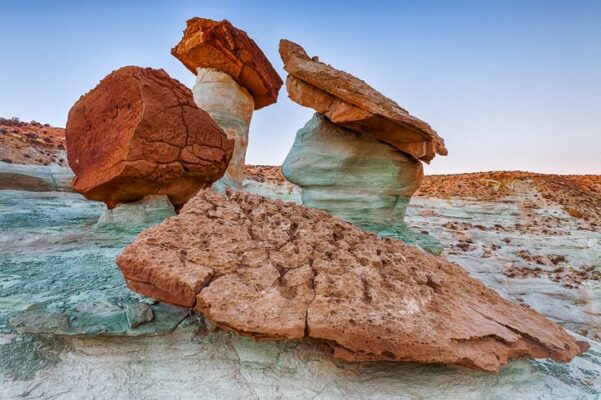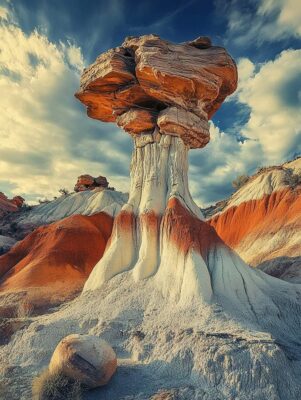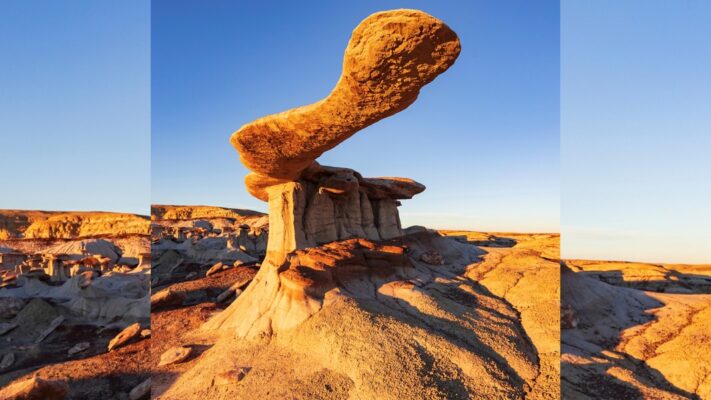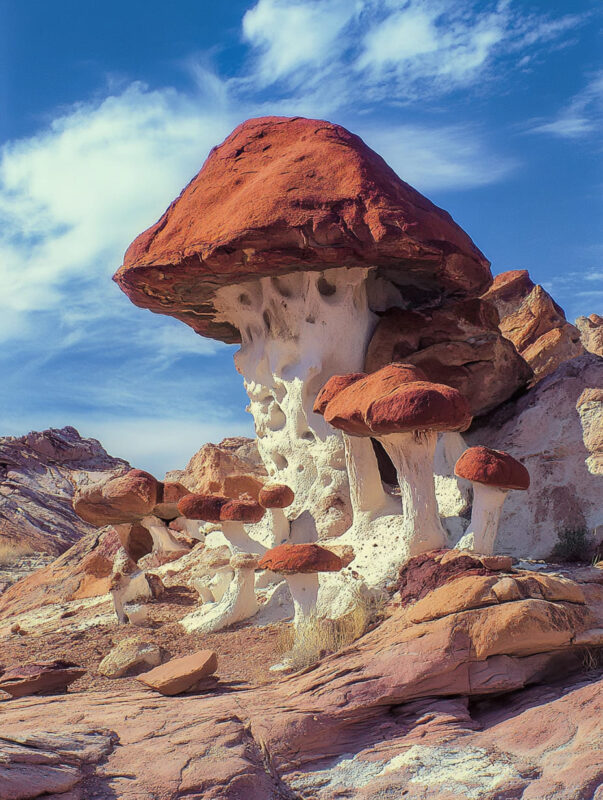New Mexico, with its diverse and majestic landscapes, is home to numerous unique geological wonders, among which the stunning sandstone formations stand out. Formed over millions of years by the forces of wind, water, and other natural elements, these rock structures exhibit bizarre shapes and eye-catching colors, attracting visitors from all over the world. This article will explore the characteristics, formation process, and famous locations featuring sandstone in New Mexico. Follow archeology.dulichvn.net to discover many hidden mysteries that have yet to be discovered. Follow archeology.dulichvn.net to discover many hidden mysteries that have yet to be discovered.

The Formation Process of Sandstone in New Mexico
Sandstone in New Mexico was formed through a complex geological process spanning millions of years, from sediment accumulation to compaction and cementation.
Sediment Accumulation
The first stage in the formation of sandstone is the accumulation of sediment particles, primarily sand, transported by wind, rivers, and other flows.
- Transportation by Wind and Water: Sand particles are blown by wind from deserts or carried by water from rivers and streams to low-lying areas, lakes, or coastlines. This process occurs continuously over long periods.
- Sorting and Deposition: As wind or flow velocity decreases, sand particles begin to settle, forming sediment layers. Particles of similar sizes tend to deposit together, creating distinct stratified layers.
- Diverse Accumulation Environments: Sediment can accumulate in various environments, from arid deserts to humid coastal areas, each environment creating unique characteristics for the resulting sandstone.
Compaction and Cementation
After the sediment layers are accumulated, they undergo compaction and cementation to transform into solid sandstone.
- Pressure from Overlying Sediment Layers: Newly accumulated sediment layers press down on older layers, creating significant pressure. This pressure compacts the sand particles together, minimizing the space between them.
- Influence of Cementing Agents: Groundwater flowing through the sediment layers dissolves minerals such as silica, calcium carbonate, or iron oxide. These minerals then recrystallize, filling the voids between the sand grains and binding them together.
- Time and Geological Conditions: The compaction and cementation process takes place over a long period, depending on pressure, temperature, and mineral composition. Different geological conditions will create different types of sandstone with varying hardness and color.
Influence of Environmental Factors
Environmental factors such as wind, water, temperature, and climate change continue to impact the sandstone after formation, creating unique shapes.
- Erosion by Wind and Water: Wind carrying sand and dust erodes the rock surface, while rainwater and flows erode cracks and create canyons, rock pillars, or other bizarre shapes.
- Temperature Changes: Temperature changes between day and night cause the rock to expand and contract, causing cracks and peeling.
- Influence of Plants and Microorganisms: Plant roots can penetrate rock crevices and widen them. Some microorganisms can also secrete chemicals that erode rock.

Famous Locations with Sandstone in New Mexico
New Mexico boasts many famous locations with beautiful sandstone formations, attracting tourists to visit and explore.
San Juan Basin
The San Juan Basin is a large area in northwestern New Mexico, famous for its diverse and abundant sandstone formations.
- Ah-Shi-Sle-Pah Wilderness Area: The Ah-Shi-Sle-Pah Wilderness area is famous for its giant “hoodoos,” formed by unique erosion processes. These strange rock structures create a surreal landscape, like on another planet.
- Bisti/De-Na-Zin Wilderness Area: The Bisti/De-Na-Zin Wilderness area also has bizarre sandstone formations, with many different shapes and colors. It is also an important site for fossil research.
- Chaco Culture National Historical Park: Chaco Culture National Historical Park preserves the remains of the ancient Chaco civilization, with architectural structures built of sandstone.
Kasha-Katuwe Tent Rocks National Monument
Kasha-Katuwe Tent Rocks National Monument is famous for its unique cone-shaped “tent rocks,” formed from volcanic ash and pumice.
- Cone-Shaped “Tent Rocks”: The cone-shaped rock structures with pointed tops create an impressive landscape. Erosion has created narrow canyons and winding trails between the “tents.”
- Volcanic Origin: The “tent rocks” were formed from ash and pumice erupted from volcanoes millions of years ago.
- Cultural Value: This area also has cultural value for the Pueblo Native Americans.
El Malpais National Monument
El Malpais National Monument is a volcanic area with many lava flows, lava tubes, and sandstone formations.
- Combination of Sandstone and Lava: El Malpais is a convergence of sandstone and volcanic lava landscapes, creating a diverse and unique terrain.
- Lava Caves: The lava caves are the result of lava flowing through the ground, creating large underground spaces.
- Wilderness Area: El Malpais has a wild and harsh beauty, attracting nature enthusiasts.

The sandstone formations in New Mexico are unique natural wonders, demonstrating the power of nature and the long geological history of the region. Conserving and exploring these locations helps us better understand the past and appreciate the beauty of our planet.


CÁC TIN KHÁC
Mary Walton: The Forgotten Inventor Who Helped Clean Up America’s Cities
Tomb of Queen Nefertari in the Valley of the Queens, Egypt
Discover the Hypostyle Hall of the Temple of Hathor at Dendera
Venus de Losange: Unveiling the Mystery of a 20,000-Year-Old Paleolithic Icon